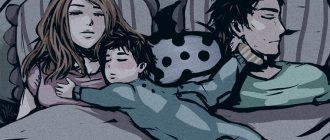- Brief information about the phobia
- Causes of globophobia
- Symptoms
- Diagnosis of the disorder
- Solution
- Existing methods
It has always been believed that the fear of balloons is a childhood problem. Research has revealed that many adults are prone to this type of phobia. The problem may seem comical, but looking at it from a psychological point of view, it can be noted that the fear of balls hides serious mental problems.
Globophobia - fear of balloons
Brief information about the phobia
A phobia never appears just like that; it is preceded by a strong emotional shock, which subsequently leads to mental disorder. What is the fear of balloons called? This is globophobia.
Balloons should be associated with the holiday and evoke positive emotions. The problem becomes relevant if, in childhood, a person received psychological trauma associated with loud banging. If a child heard the sound of popping balloons and was afraid of it, then he can retain his anxiety for a long time. In adulthood, sudden bangs, explosions of firecrackers and other similar sounds can cause a feeling of fear.
Causes of globophobia
A phobia can have various manifestations.
- A person may experience a feeling of fear while inflating a balloon. The problem may be associated with a negative experience when the process of filling the balloon with air was not successful: it burst from excess air and hit the face painfully.
- The phobia of flying away with a bunch of balloons also comes from childhood. The child may be frightened by the impressive size of the ligament.
- A helium-filled balloon flew away and never returned. An incident that impresses a small child so much can develop into a feeling of fear in adulthood.
Flying away balloons can scare a child and provoke globophobia
Where does this phobia come from?
Having once appeared at an early age, the fear of balls may not subside over the years. On the contrary, an adult will look ridiculous with his fears, while it is impossible to get rid of a phobia on his own.
Often the cause of the fear of balloons in children is a traumatic situation that occurs in a child who sees a balloon for the first time. A large bunch of balls may well frighten a small person.
A persistent fear associated with balloons is deposited in the child’s subconscious, which involuntarily arises if the situation repeats. This is also associated with the possibility of losing an air friend, who is so easily and naturally able to fly into the sky without leaving a trace. This also often becomes an obsessive fear, first for a child, then for an adult.
Globophobes are quite rare, but such a person is easy to pick out in a crowd. At the sight of balloons or their image, a person’s face changes dramatically, he begins to sweat excessively, has a panic attack, and tries to hide so as not to see the balloon.
The dangerous thing is that parents often do not realize the seriousness of the phobia that haunts their child, and the current situation seems insignificant or funny to them. Many people believe that over time the child will outgrow his fear. But a phobia requires mandatory treatment. If this does not happen in childhood and adolescence, then a predisposition to nervous diseases makes an adult a real neurasthenic who is afraid of balloons and is embarrassed by it. A phobia is a disease, but not a whim, as parents sometimes think. This is a serious deviation from the norm, requiring the intervention of a psychologist.
Symptoms
It is very easy to recognize a person who suffers from a fear of balls. The symptoms of such disorders are pronounced. People are terrified of balls and everything connected with them. People with such psychological disorders may experience the following problems with the body when they see the object of fear:
- tachycardia;
- heavy sweating;
- chills;
- stiffness in movements;
- dizziness or fainting.
There is also an irresistible desire to hide away from the object of your fear. People try to suppress such desires, but there are times when they behave inappropriately:
- close in on themselves;
- sit on the floor and begin to sway from side to side;
- hiding;
- Cover your ears with your hands.
Such symptoms require urgent consultation with a specialist.
Symptoms
For a person with glophobia, the same picture pops up in the brain. This usually involves a balloon exploding in the face.
When the thought, sight or sound of a feared object occurs, symptoms of anxiety appear:
- Dyspnea;
- Palpitations, chest pain;
- Children cry, run away or hide;
- The child comes up with excuses to prevent encountering danger. Refuses to attend parties or fairs.
- Trembling, sweating and other physical symptoms;
- Gastrointestinal disorders, nausea.
Diagnosis of the disorder
The disease is paroxysmal in nature, many do not attach importance to it. The only exceptions are cases with panic attacks, which haunt a person with every contact with a phobia. Diagnosis of such a disorder is necessary to ensure that globophobia does not lead to other mental disorders.
A fear of balloons is easy to diagnose in childhood and easy to eradicate. If treatment is not carried out at an early age, then over the years the problem will lead to neuroses and stress.
Symptoms of Globophobia
Globophobes may experience fear not only from touching the ball, but also from seeing them and even depicting them. This disease is paroxysmal in nature.
Despite the fact that fear of balls is quite rare in people, it is not difficult to identify by the following symptoms:
- cardiopalmus;
- increased sweating;
- dizziness;
- nausea;
- dyspnea;
- fainting;
- panic;
- diarrhea;
- stiffness of movements;
- crying (in children).
Many globophobes have a desire to run away, to hide from a frightening object.
In children, perhaps the most noticeable symptom of a fear of balloons is excessive crying. When he sees it, the child tries to hide as quickly as possible from the object that frightens him. For children, the main observers who can identify symptoms of globophobia are parents. The first symptoms of a child’s fear of balls should certainly be a wake-up call for parents. Many children and adults, due to their fear of balloons, do not attend fairs, parties, and birthdays. If a child's peers know about his phobia, they often tease him. This further aggravates the course of the psychological disorder. To the question of what to do if you are afraid of balloons, the answer is clear - contact a psychotherapist.
Diagnosis of fear of balls
Many people do not attach importance to their fears, frivolously assuming that everything will go away on its own. But this mental condition requires professional treatment, and first, accordingly, diagnosis. The doctor conducts a survey of the patient, always about the duration of the attacks, and studies the patient’s symptoms. Additional tests are carried out as necessary. Treatment will be especially effective if the disease is detected at an early age, otherwise future phobia can lead to more serious illnesses, especially in people with a hereditary predisposition to mental disorders. In order to diagnose globophobia in time, you need to carefully study the patient, this will require a clinical examination.
If, during the examination, other concomitant mental disorders are discovered, in addition to the fear of balls, then the doctor may recommend a computed tomography scan of the brain. The patient is additionally questioned for the presence of hereditary diseases.
Solution
The sooner you start fighting the disorder, the easier it is to achieve the desired result. If a child is afraid of a bursting balloon, then you should gradually instill in him trust and love for the toy. You can suggest making balls from plasticine or drawing them on paper.
Try to avoid such a problem: if a balloon bursts next to your child, be sincerely surprised and laugh, then the child will perceive the incident as a game. Children copy their parents' behavior, so don't focus on fear.
It is more difficult to cure an adult from a phobia. The main emphasis to solve the problem is on contact with the irritant. The patient himself must recognize the pettiness of his fear and let it go.
The treatment method is that a person must let go of his fear. To do this, take a bunch of balloons and release them into the sky, symbolizing parting with the phobia.
You can be brave and pop the balloon with a needle. Don't close your eyes, seeing the mechanism in action will make it easier for you to perceive what is happening.
To treat a phobia, an adult needs contact with balls
Existing methods
After consulting a psychotherapist or neurologist, you may be prescribed medication. Sedatives in combination with sports and meditation have a positive effect. The cognitive method of therapy allows the patient to independently solve the problem with globophobia. The treatment is carried out in sessions: the person is mentally sent to a situation where he experienced an incident that led to fear.
Another method of therapy is to put the patient into a hypnotic state. This technique is considered the most productive and allows you to identify and eradicate the problem in just a few sessions.
Causes
Like most phobias, this disease stems from negative experiences in childhood. The disorder is common in young children and gradually decreases as they get older. However, for some, fear continues into adulthood.
The child may have experienced a balloon explosion near his face and he remembers the fear of balloons every time he sees a balloon. Most children are afraid to attend parties, fairs, and birthdays because of the association of events with balloons. When other peers know about this phobia, they tease or bully the child. This leads to even more terrible thoughts.
Balloons are usually associated with noise. Additionally, the sound they make when they explode is similar to that of a firearm. As a rule, this happens unexpectedly. This is a trigger for people who experience this disorder. Even the squeaking sound created by the ball can be frightening for such a child.
Globophobia is often combined with a fear of clowns. For a child attending an event who has both phobias, the fears may merge together.
Treatment of globophobia
In order to overcome internal fear, the desire of the patient himself is first necessary. If the mental disorder is in a mild stage, then it is quite possible to cope with such a disease on your own. The following techniques can be used to combat fear:
- Try to analyze your fear yourself. Perhaps as a result of the logical justification of the fear, the stressful object will become less dangerous.
- You need to maintain a positive attitude in everyday life.
- Fear can be broken down at a subconscious level into several smaller ones and dealt with each segment gradually.
- Using the principle “I will become the master of what I fear,” try to establish gradual contact with the source of fear.
- If a child requires psychotherapeutic treatment, then classes can be conducted in a playful way. For example, sculpt balls from plasticine, draw festive scenes decorated with inflatable balloons.
- Activities associated with releasing helium balloons into the sky have a good therapeutic effect. An object flying away into freedom can symbolize the ability to let go of your fear. You can also just fool around and pop the balls with a needle. Gradually, the sound of a bursting balloon will become familiar, and anxiety will fade into the background.
Fear is a kind of human protection from troubles, so letting it go can be quite difficult. In order to correct a child’s emotional background, sometimes it is enough to create an atmosphere of safety and goodwill around him.
Reasons for appearance
The fear of a small child at the sight of a bunch of balloons, especially if one of them “decides” to burst, making a sharp and unexpected sound for the baby, may well provoke the development of the disorder.
Also, the baby could get upset if his ball simply flew into the sky or got tangled in branches or wires.
Such a situation can evoke associations with the loss of a loved one, and what child doesn’t cry after losing his toy?
Only in those cases when he did it on purpose is he able to rejoice, watching how his ball gradually rises, how the wind “throws” it from side to side.
Also, fear of balls may appear after watching horror films. For example, in the film “It,” a maniac clown killed children and always appeared with a red ball that lured the kids.
If one of the parents has been diagnosed with any kind of mental disorder, then there is a high risk of also “acquiring” something similar at the time of experiencing severe stress and psychological trauma.
In this case, we are talking about heredity and it is extremely important to monitor your condition so as not to miss the alarm bells of a more complex disease.
What does it represent?
It is more common among children and adolescents; in adults, this disorder rarely manifests itself, and then mostly in a mild form. Let’s say they won’t cry at the sight of a balloon, but if there is a need to inflate it, they will refuse. Or they will inflate with their eyes tightly closed.
Globophobia may seem like a very minor phobic disorder, but it brings a lot of trouble and difficulty to those who suffer from it.
After all, such a person is prohibited from attending weddings, birthdays and other celebrations, the attribute of which is almost always bundles of balloons.
Even in shopping centers, at the opening of a store, they are displayed at the entrance and throughout the hall. And all because they are a symbol of any holiday.
Therefore, when leaving home, a person risks experiencing a panic attack in a public place.
And this only complicates the condition, because shame for his behavior and reactions can be so toxic for him that he simply stops communicating with people. Thinking they know he's "abnormal".
After all, he has an understanding that in fact the balloon is not mortally dangerous. But he can’t do anything about his feelings. The horror and panic that arise are beyond his control.
Jessica Alba is afraid of balloons. One day her husband wanted to make a surprise and decorated his hotel room with them. But instead of the expected joy, he saw Jessica's eyes full of horror. She is a globophobe, and for some unknown reason he did not know about it.










